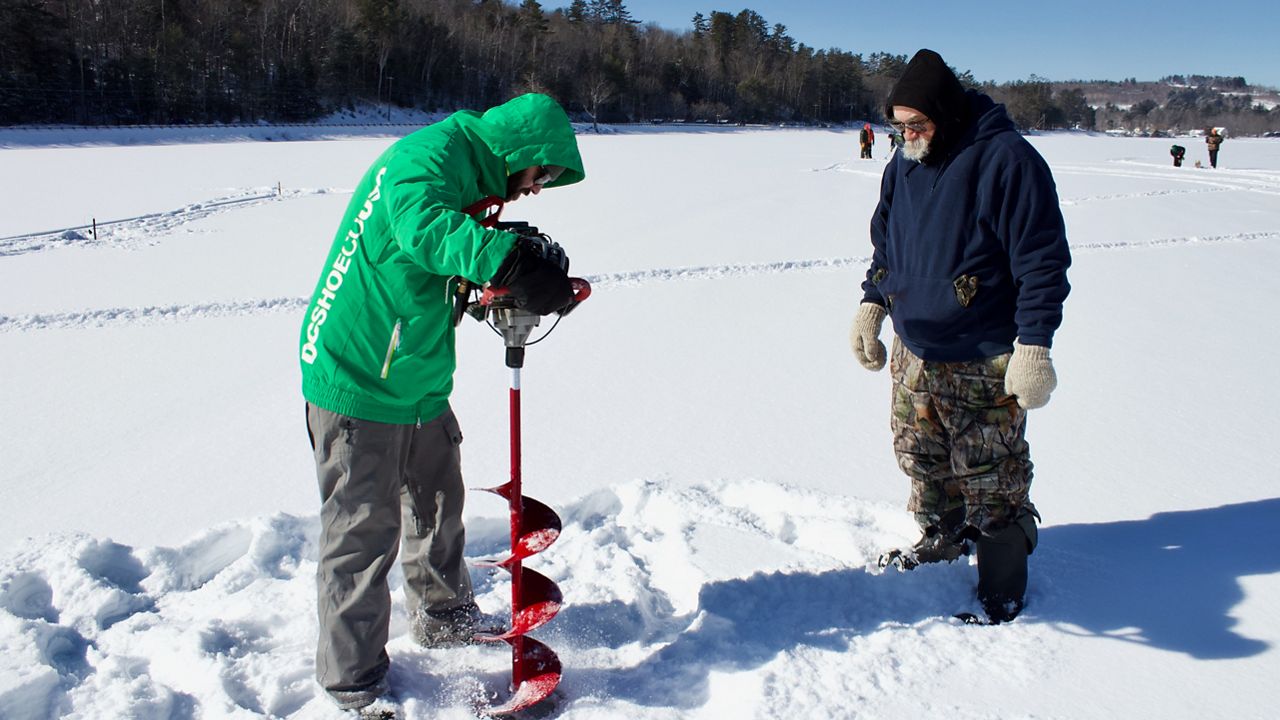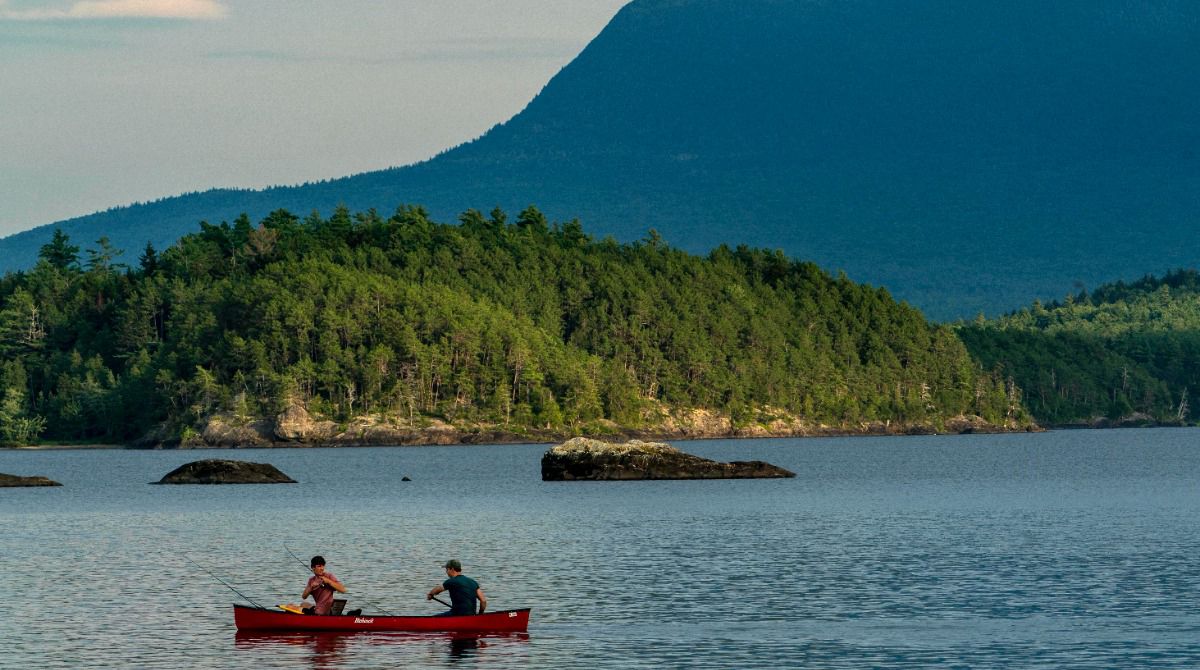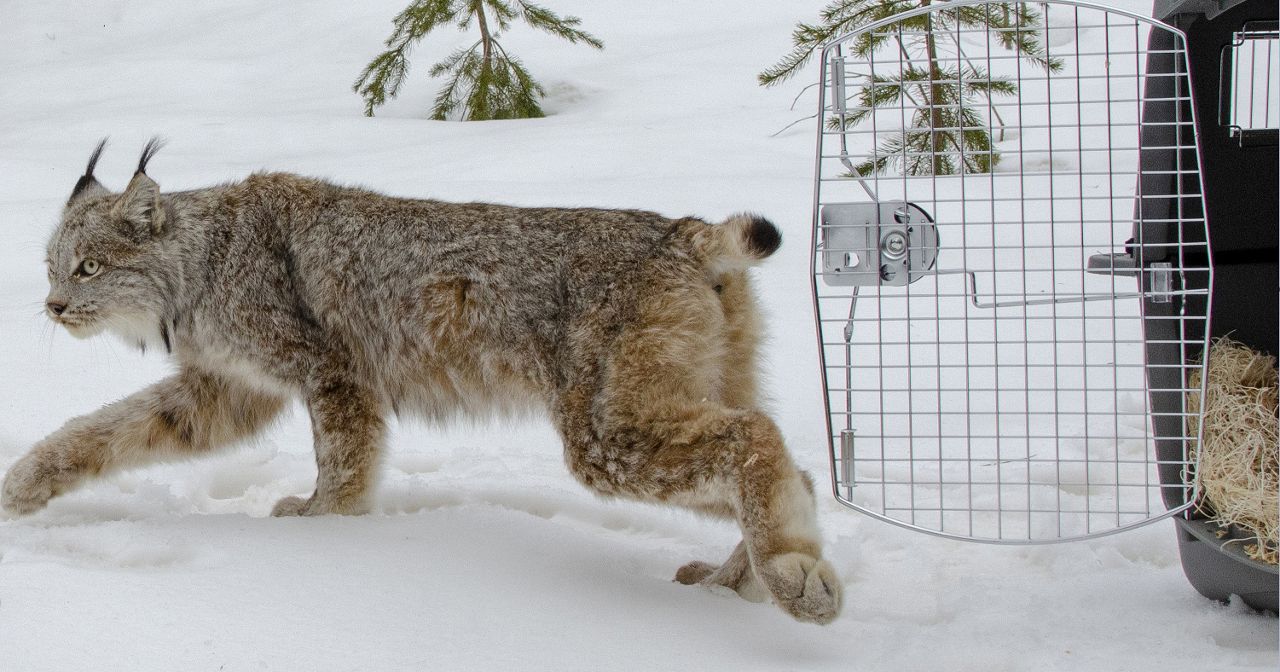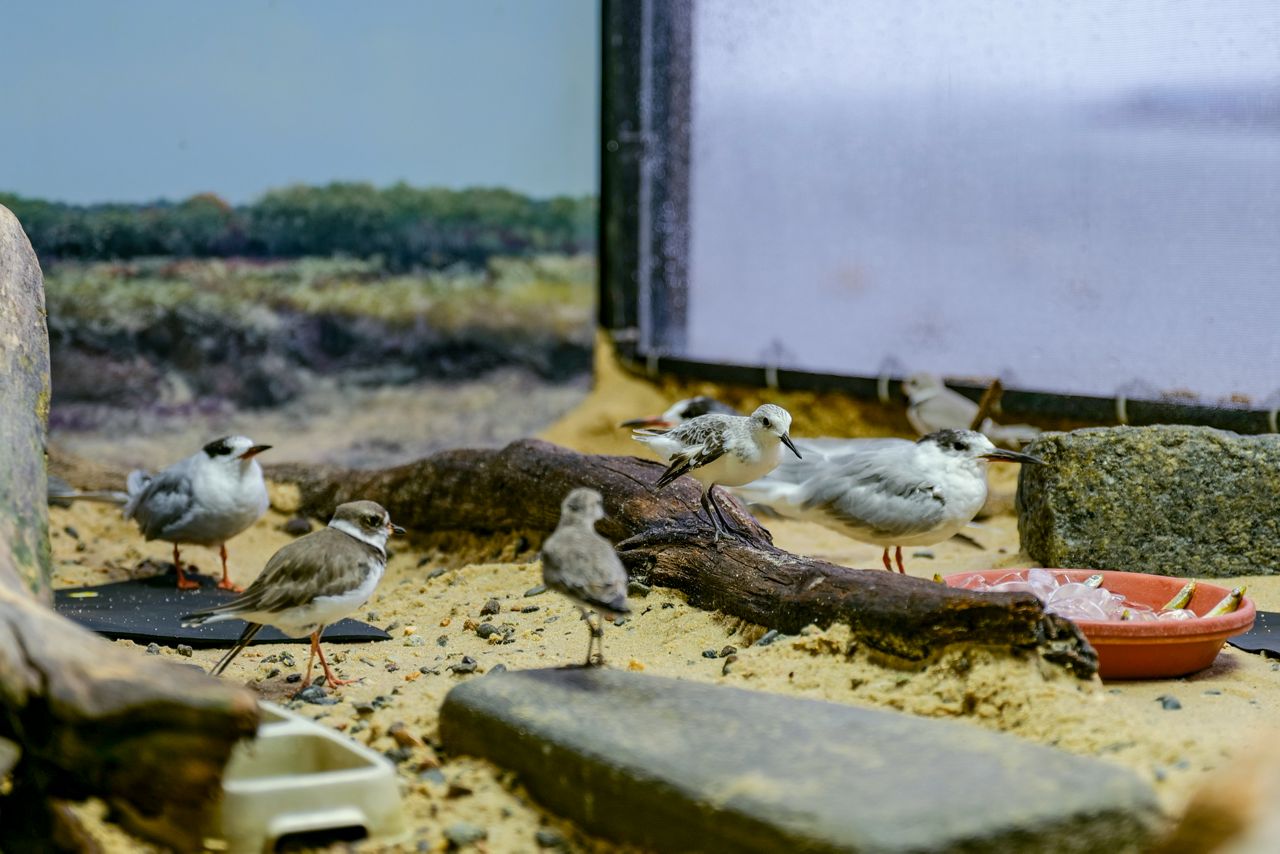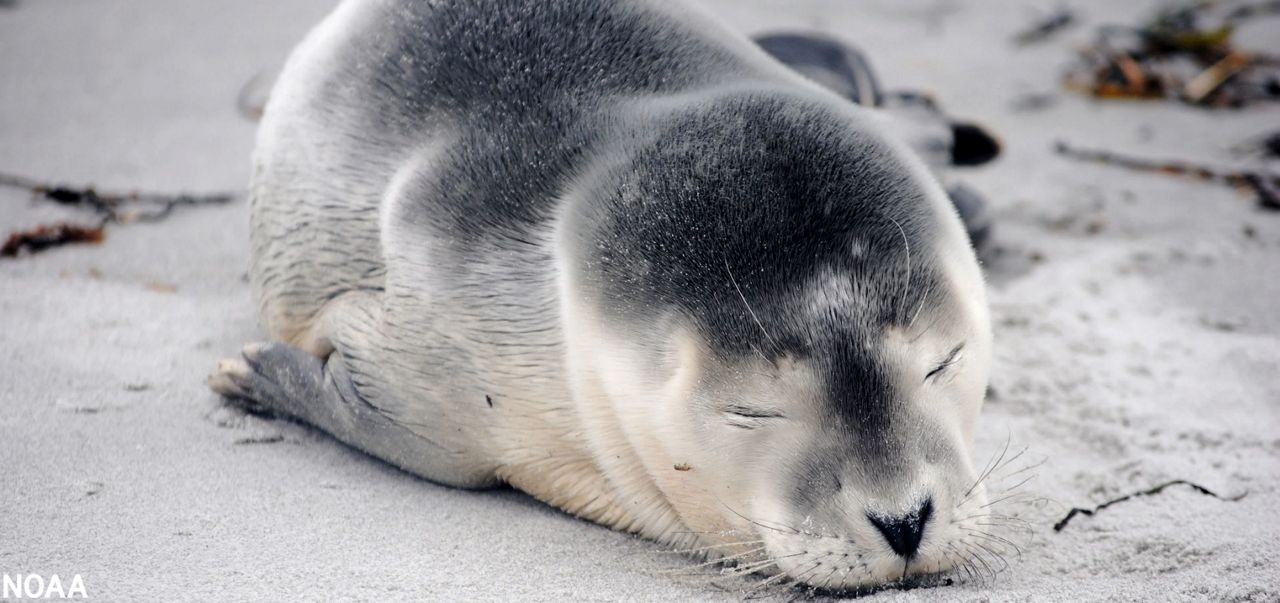Ice fishing, for Ron Fournier, is hours of boredom punctuated by moments of panic.
Fournier, the recreational safety supervisor for the state Department of Inland Fisheries and Wildlife, had plenty of cause for that quip at a free state ice fishing clinic in Norway on Saturday.
“We set this back into the water, and we wait. We’re patient, we play games, we throw a Frisbee around,” Fournier told one family who joined the clinic, showing them how to set a trap through a hole in the ice with a baited hook below and a flag that would flip up at a tug on the line. “We might as well go in the shack, warm up, have a snowball fight, things like that. And this is what’s going to happen – all of a sudden … the flag goes up. Everybody yells ‘flag up! Flag up!’”
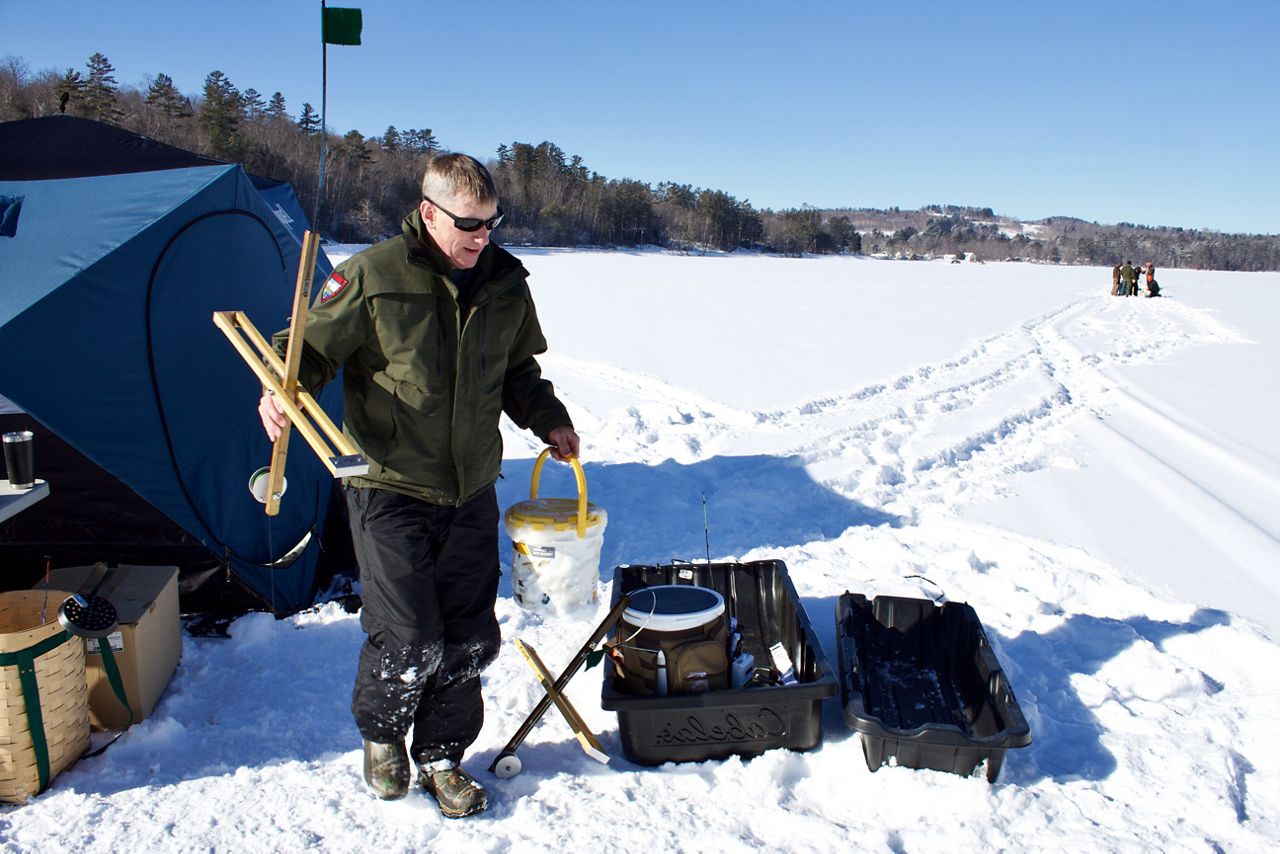
Many traps were set, but only one flag popped up during the better part of Saturday morning. Everyone hustled excitedly across the snowy, frozen surface of Pennesseewassee Lake to see what might come through the ice: nothing. The bait fish itself had triggered the flag.
Better luck next time. The group around the sprung trap dispersed, shuffling back to wait by their traps or play in the snow, hang out in the warm tent or just sit and gaze out at the frozen lake.
This sport may be mostly made up of hours of boredom, but it’s a peaceful, cheerful kind of boredom – an uncommonly easy-going way to spend a frigid day outside during a Maine winter, made easier for newcomers by free training, gear and foot warmers supplied by the state.
Yet this classic Northern pastime, like so many driven by seasons and weather, is changing with the climate. This is clear in data about ice cover on Maine lakes, which offer the longest records in New England, according to government studies – as far back as 1807 on Sebago Lake.
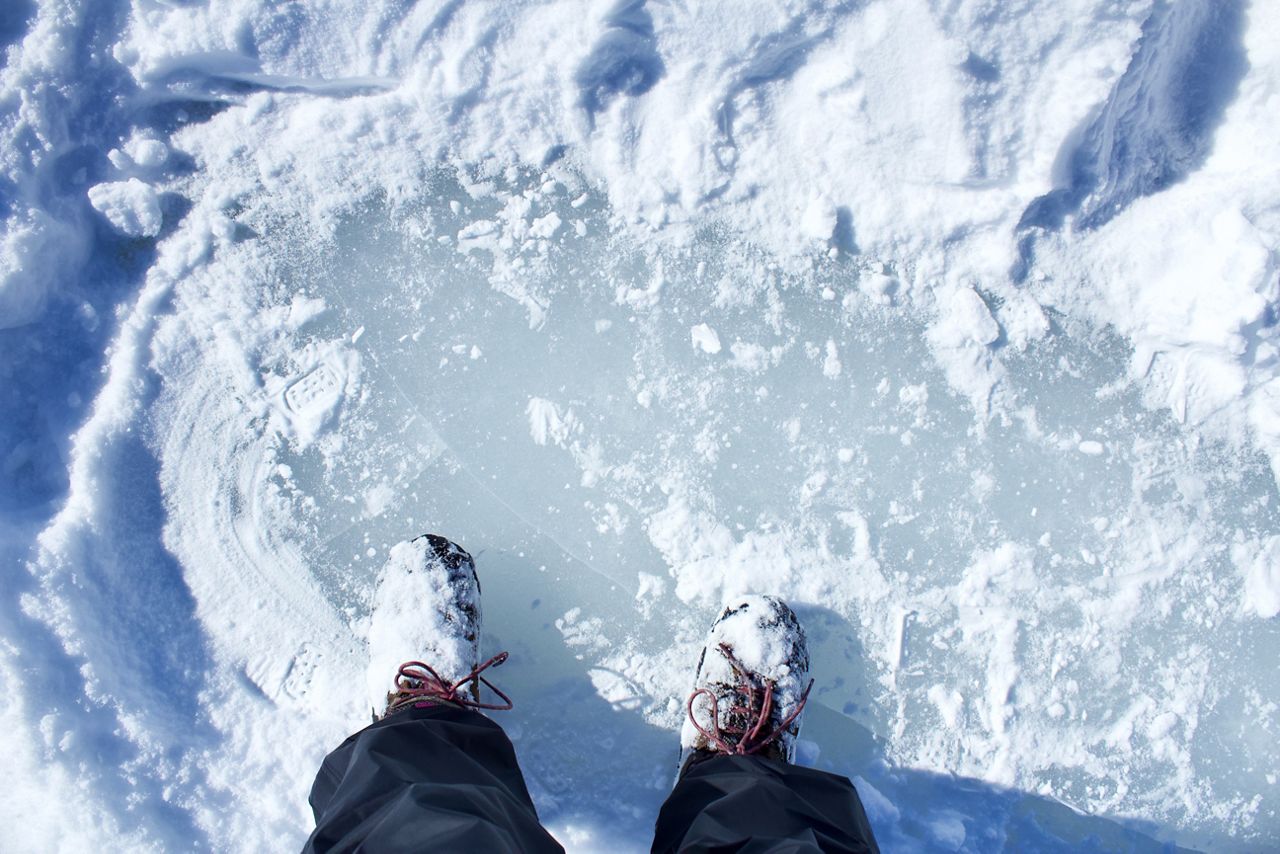
“Ice-out dates have become significantly earlier in New England since the 1800’s,” the U.S. Geological Survey said in a 2005 paper. “Ice-out dates changed between 1850 and 2000 by 9 days in northern and mountainous areas of New England (primarily northern and western Maine) and by 16 days in more southerly locations.”
The USGS said in this analysis that Maine warmed by about 2.6 degrees Fahrenheit on average in late winter and early spring from 1850 to 2005. Government data now says the state has warmed by 3 to 4 degrees total, as the effects of human-driven climate change speed up.
It means a trend toward shorter, milder winters, with more concentrated bouts of snow and more frequent mid-winter thaws, warm snaps and rainy spells. But as the week of the Norway ice fishing clinic showed, it takes more than a single balmy day to thaw a Maine lake in the winter.
Wednesday before the clinic saw record-breaking temperatures in the 60s across much of Maine. Then, by the next morning, temperatures in most areas dropped 50 degrees. On Friday, another snowstorm with lows in the teens or single digits moved through – leaving the Norway lake, on Saturday, topped with inches of snow above 18 to 24 inches of rock-solid ice.
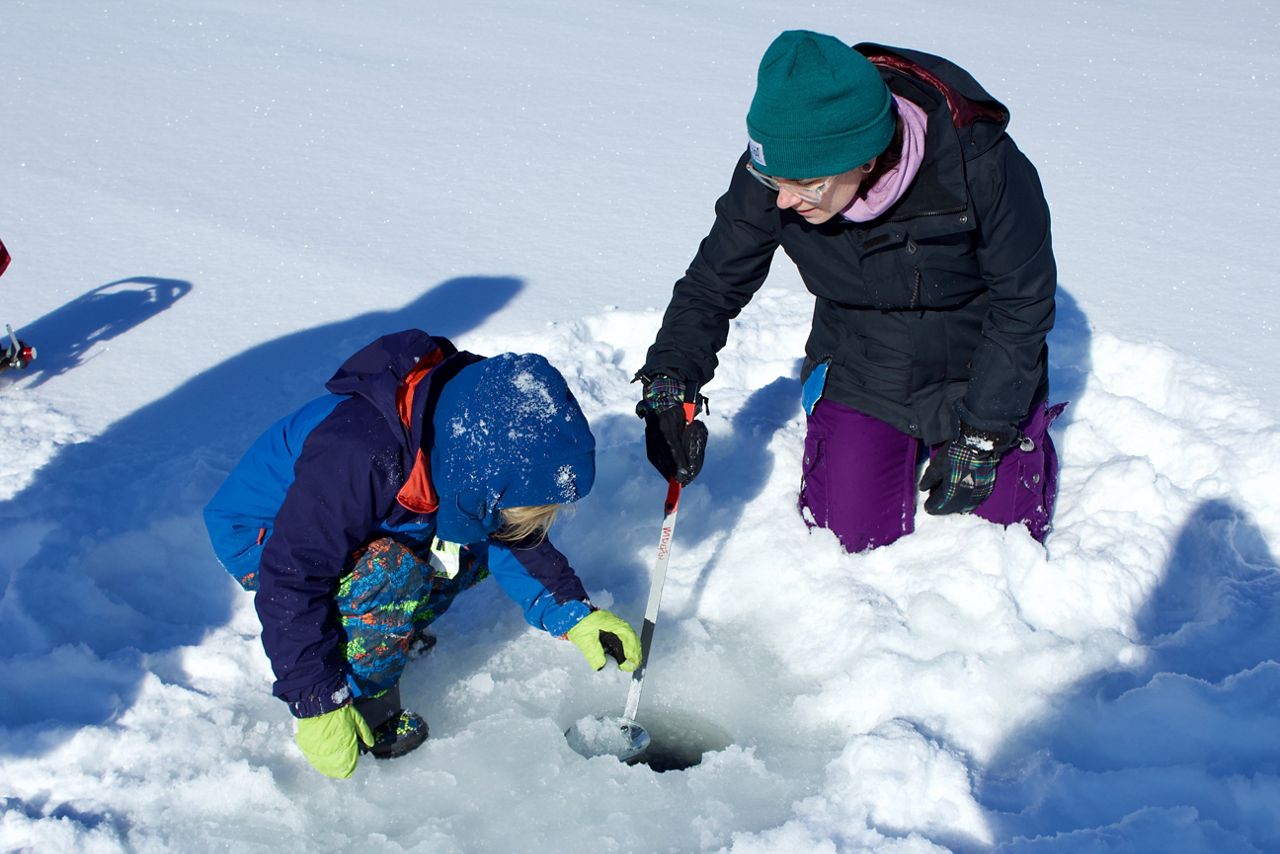
“The warm day we got last week, I think it got people thinking that things were less safe,” said Fournier, the safety supervisor, standing on that ice surrounded by luckless fishers. “It actually made it stronger. What it did is it basically took any snow and stuff like that and it actually liquefied everything, and then it actually froze really hard that night. … We actually gained ice.” This effect of those rapid “winter whiplash” freeze-thaw patterns, which scientists expect will become more frequent as the climate continues to warm, was visible inside the ice fishing holes.
First time ice-fisher Dan Flynn and state volunteer Brian Nichols used a gas-powered auger to carve one of those openings, spiraling down through snow and ice until the drill punched through and slushy blue-ish lake water spewed out like a frozen volcano.
They scooped the slush out of the hole to keep it clear and prevent re-freezing, leaving a clean circle of ice around lake water. The ice showed a cross-section of freezing events – thick black ice where the lake initially froze, with lighter blue bands where rain and snow have added on.
Norway’s lake now thaws about 10 days earlier than at the start of its record, according to USGS data – from an average ice-out of April 28 in 1874, to around April 18 by the late 2000s.
This includes plenty of year-to-year variability. Fournier, the safety supervisor, said many lakes didn’t freeze until January this year, after a mild start to winter in late 2021. Another recent year, though, he remembers ice fishing straight through November to April. And he said this all varies from lake to lake, too – meaning the best rule of thumb is to expect the unexpected.
“Best thing with ice safety is really everywhere you go, always assume it’s a little different,” Fournier said. “A lot of times you can just ask questions – local knowledge is always good.”
Moving water is a bad sign, he said, meaning folks should identify and avoid areas like inlets, outlets, culverts and bottlenecks, or anywhere with a current. Especially if a frozen water body hasn’t visibly been walked or driven on, use caution – drill small holes as you go to check thickness, and never walk on ice that’s less than about half a foot thick.
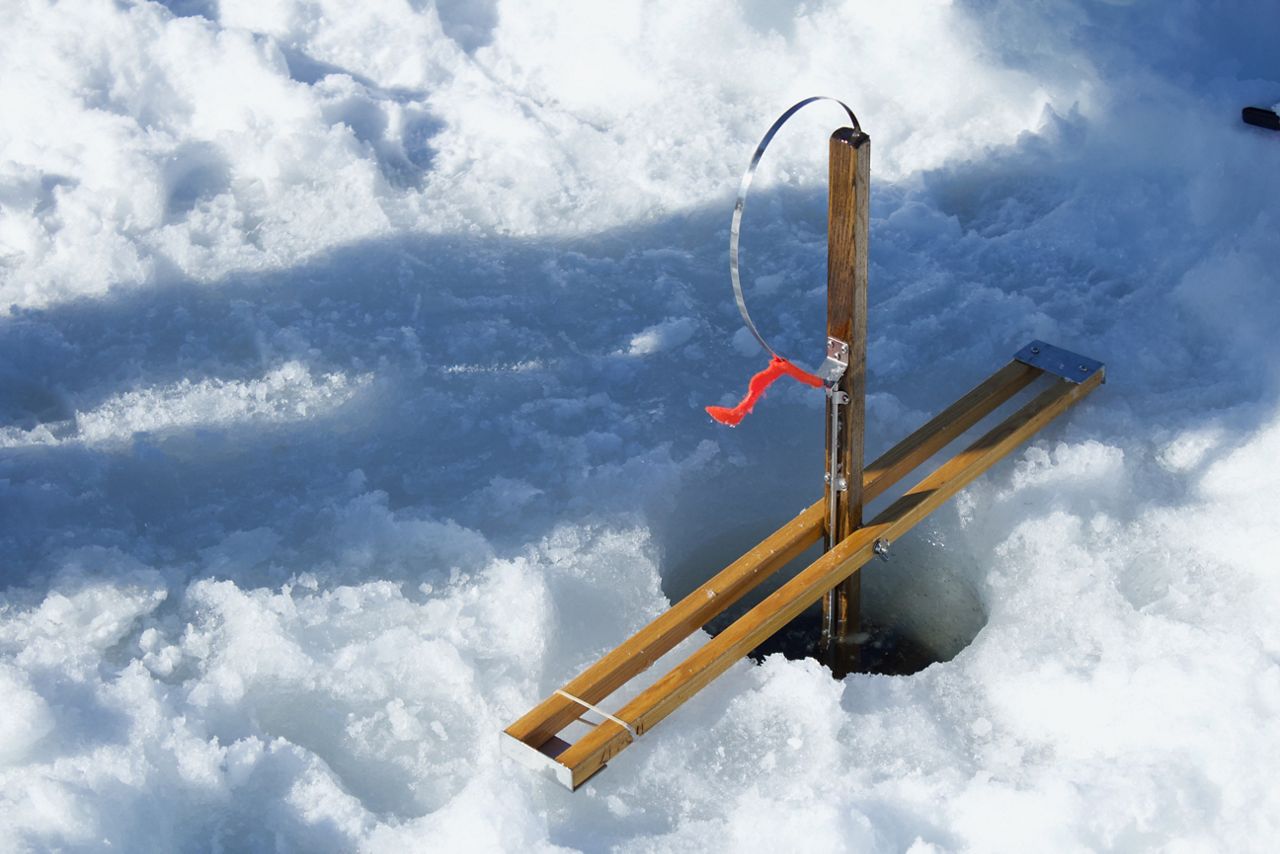
Still, Fournier and several game wardens at Saturday’s clinic said they don’t worry too much about changing ice patterns, especially at a time of year like February, when ice on most Maine lakes is typically reliable unless there’s been a very protracted warm spell. Mainers generally aren’t required to pull their bobhouses off thawing lakes until the end of March.
Dan Flynn, the first-time ice fisher who got to drill a hole for his trap, spent a couple hours at the clinic with his partner Whitney Leblanc and their six-year-old son Elias, who they said has been begging to ice fish all winter. After a distressingly cold start, a ride in a sled and some time in the warm tent, Elias got into it, asking questions about fish and throwing snowballs with his mom.
“This is the lake that we like to swim in during the summer,” Leblanc said. The family lives nearby, and Flynn said he also often fishes in this lake from his kayak.
Leblanc said their home-schooling of Elias often circles back to climate change. She thought about it as they played on the ice, with its reassuring solidity in late February. The family saw a can lying at the bottom of the lake when they drilled their first hole – a reminder for Elias about keeping the planet clean and healthy for fish and fishermen.
“It just comes back to what it’s going to be like when he gets older and what he can do to make a change,” Leblanc said.
Game warden Tom McKenney, a sergeant in the Norway area, said state activities like the fishing clinic are important to keep people connected with the nature that surrounds them and with Maine’s favorite seasonal pastimes, even as they change.
“We can all get caught up in being cold – but really embrace it. Get out of the house,” McKenney said. “We are fortunate in the state of Maine where we have so many bodies of water, and four seasons. … You can go skiing and spend $400 bucks on a weekend. You can come fishing and it won’t cost you a whole lot, and you can have a lot of fun.”




